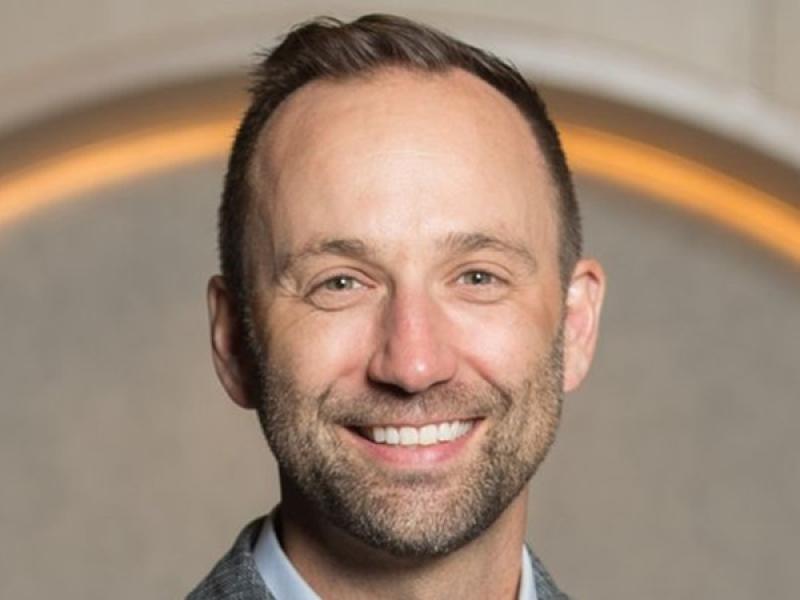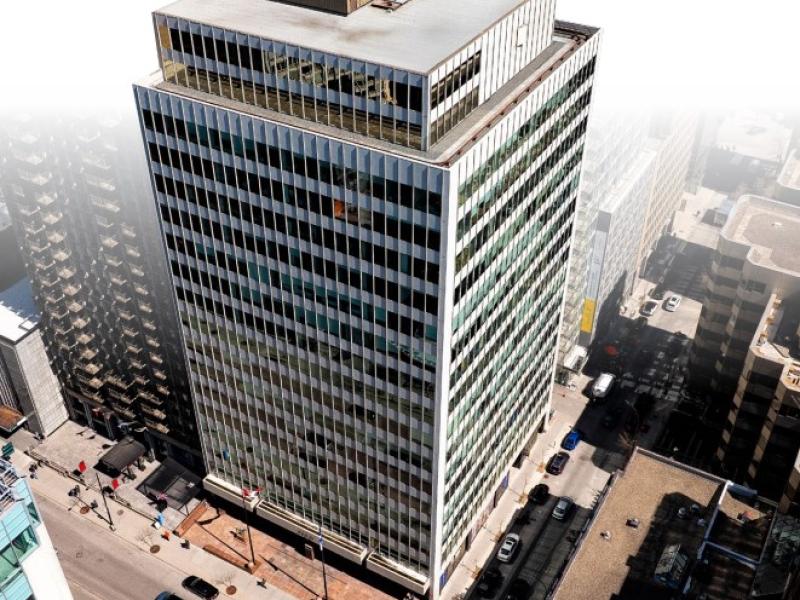
Carrie Russell, HVS Canada senior managing partner. (Courtesy HVS)
A panel of Canadian hotel owners and industry experts who assembled one year ago in a virtual presentation to discuss how COVID-19 had crippled the sector recently reconvened to update how the situation has evolved.
HVS Canada senior managing partner Carrie Russell (HVS is a global consulting firm focused on the hospitality industry) opened the March 31 presentation with some sobering statistics.
She said the Canadian hotel occupancy rate was 31 per cent in 2020. Its lowest point was the week of April 11 at 12 per cent, while it reached its peak the week of Aug. 15 at 43 per cent. Occupancy was 17 per cent the week of Christmas and sat at 32 per cent in late March 2021.
The average daily room rate in 2020 was $131, down 21 per cent from the previous year. Revenue per available room (RevPAR) was $40, down 62 per cent from a year earlier. RevPAR declined by 70 per cent at urban hotels and 40 per cent in small markets.
Looking back a year
When the pandemic struck, Silver Hotel Group chairman Deepak Ruparell was worried about potentially having to file for bankruptcy. Laying people off on March 15 was devastating, he added, and every line on the balance sheet was examined along with the company’s business strategy.
Still, Ruparell thought a recovery for the hotel industry would occur in six to nine months. That didn’t happen, obviously, but Silver has reduced the rate in which it burns through cash due to assistance from government relief programs.
Twelve of Silver’s 21 family-owned hotels are in the Greater Toronto Area, with others in Vancouver, Edmonton, Calgary, Montreal and Ottawa.
Sunray Group was looking for loan principal relief from lenders a year ago, but president Kenny Gibson said his company is in a much better position now even though the recovery is still in its very early stages.
Sunray is a family-owned company specializing in hospitality and development. It owns and operates 53 hotels under several major brands and employs more than 6,500.
Lending was largely non-existent through the first six months of the pandemic, according to Mark Kay, president of CFO Capital, which has a lender pool that includes banks and other funds in Canada, the United States and Europe.
The outlook for hotels
Widespread COVID-19 vaccinations will drive the hotel industry’s recovery. Domestic leisure travel should be very strong this year and rental cottages and resorts will be in high demand, while business travel could start to come back in the fourth quarter.
Mandatory quarantines have helped hotels located close to the largest airports in Toronto, Vancouver and Montreal, the only Canadian cities accepting international flights.
“Those markets are seeing both rate and occupancy increases that are pretty significant,” said Russell. “They had almost 60 per cent occupancy last week in all three of those markets.”
Gibson said hotels in secondary and tertiary markets are recovering the quickest. Urban hotels, those used for large meetings, and airport properties which aren’t accepting quarantined travellers are lagging, according to Gibson. He expects things to return to pre-pandemic levels by late 2023 or early 2024.
Gibson pointed out the hotel industry recovered at higher levels after past crises such as 9/11, SARS and the 2008-’09 financial crisis, and it happened in 12 to 18 months. That’s a shorter time frame than is anticipated for this recovery, however.
InnVest Hotels chief financial officer George Kosziwka said meeting planners are checking on fourth-quarter availabilities, but there are still plenty of unknowns as to what will be legally permitted. More clarity from governments on vaccine rollouts and the easing of restrictions will be needed to boost group travel bookings, he added.
InnVest is the largest owner of hotels in Canada, with a portfolio of 85 full, limited and select service properties representing 14 internationally recognized brands.
“There’s a lot of pent-up demand for travel,” said Russell. “There are budgets out there that didn’t get spent by groups and associations.
“The leisure segment wants to come back and travel. The psychology is going to be that people have been very close to home and, in the next few years when we’re vaccinated, there’s going to be a lot of people looking to enjoy life in a different way than they have in the last year.”
Hotel lending
Kay said lenders are cautiously optimistic and funding more hotels now than six months ago and he expects that to pick up. Funding is available for construction, acquisition and refinancing for all hotel categories, according to Kay.
“Lenders are out there, but on a very selective basis,” said Ruparell, who is seeing lending ratios of 55 to 65 per cent. “It’s challenging, but if you’re the right buyer or seller with the right covenants, there is financing available from a few institutions right now.”
Kosziwka said some lenders have told him their hotel loan portfolio is in better shape now than during the 2008-’09 financial crisis.
Hotel valuations
Panel moderator and Colliers Hotels executive managing director Alam Pirani said there was a perception a year ago that hotel investors were looking for 20 to 40 per cent discounts to buy hotels, but that hasn’t happened. There have, however, been discounts in the 10 to 15 per cent range.
The Colliers hotels team has been involved in more than 750 Canadian hotel and resort sales valued in excess of $10 billion, making it the most active hotel real estate intermediary in the country by units and volume.
Brian Flood, vice-president and practice leader of Cushman & Wakefield’s hospitality and gaming group, said there were no benchmarks to work with early in the pandemic. Hotel transactions weren’t occurring and current earnings and performance metrics aren’t very helpful in estimating hotel values.
It’s important to look at hotel investments “over a suitable horizon,” he said.
“The majority of the drop in value is contained in cash-flow shortfalls in the short term,” Flood said. “Most people in the industry believe we’ll get back to 2018 and 2019 levels in the next two to three years.”
Ruparell said labour, materials, financing and tax costs are increasing and, even if hotel revenues come back, he’s concerned these increased costs will impact new hotel construction.
“The key component is the valuation should be at or above the cost of construction,” said Kay.
Kosziwka said values will creep up as every month passes and an end to the pandemic draws nearer.
Hotel transactions and alternative uses
Pirani said Canadian hotel transaction activity in 2020 was the lowest in memory and 51 per cent was for alternative uses by purchasers.
InnVest is under contract to sell three hotels. Kosziwka said two will be converted to alternative uses and are selling above pre-COVID values. The third will remain a hotel and is selling “at a pretty reasonable discount to pre-COVID values.”
InnVest also has an unsolicited offer for a fourth hotel, for an alternative use, at a higher-than-pre-COVID value.
Flood tracked the 2020 sales of 20 hotels with about 2,000 rooms for alternative uses – redevelopment or conversion to social housing – for an average price of $240,000 per room. He believes there will be more of those sales this year as municipalities are buying hotels for social housing.
Kay said CFO is financing deals for alternative uses for hotels.
Pirani expects increased hotel transaction activity in 2021, as it’s already happening in the U.S. He pointed out, however, plenty of institutional capital has been raised in the U.S. for the hotel sector but there’s comparatively little institutional capital in Canada invested in hotels due to the relatively small market.
He has seen some investors divesting hotel assets to get into more diversified portfolios, but noted distress sales of hotels didn’t occur until two years after the 2008 financial crisis.
Ruparell said there may be fatigue selling by owners who don’t want to invest more capital in properties, or older owners who want out of the business.
Impact of government subsidies
The hotel sector has received $11 billion in liquidity relief from various government subsidies, according to Pirani, but that support is expected to stop at the end of June.
Ruparell said the hotel industry needs government support for another year. He also stressed the importance of working with financial institutions to acquire loan principal payment deferrals for six to 12 months.
“The Hotel Association of Canada has done a great job of advocating for our industry and we really need the CEWS (Canada Emergency Wage Subsidy) to extend somewhat past June, even if it’s at a somewhat lower percentage than 75 per cent,” said Kosziwka. “It’s well-designed and has really, really helped our industry and our employees.”
Russell said the lack of hotel distress sales is due to the large government subsidies and that Canadian lenders have taken care of clients.
“The fact that we didn’t see a major decline in values is a real function of all the support that was there for the industry. So if that support comes out and we don’t see a recovery at the pace we’re hoping for, because of the pace of vaccinations and everything else that’s going on, there’s still potential for distress ahead of us.”
Operational changes
InnVest took a hard look at operating structures at each of its hotels and invested millions of dollars in severance packages for people nearing retirement or who wanted to move into different industries.
Kosziwka said the company offered severance packages to 650 employees and eliminated about $30 million in wages in 2020, about 13 per cent of its payroll.
“Even if half of these positions do creep back over time, we still would have generated more than $200 million in value, or nearly 10 per cent of our pre-COVID values. We have a good chance of returning to pre-COVID values quicker and hopefully surpassing those values in the years to come.
“The goal is to return to 2019 profits without returning to 2019 top-line levels. This change in the operation model to improve efficiencies, we think, is the silver lining of the pandemic.”
Hotel brand standards
Kosziwka said hotel brands are being cooperative and allowing deferrals of new furniture, fixtures and equipment because many owners don’t have the liquidity.
“It’s going to take time for us to build our liquidity back and this type of cooperation is going to have to extend past when business gets back to normal, because we’re going to need a period of time to stock our shelves with a bit of cash again.”
Flood said some brands have offered owners concessions on things such as fees and capital requirements.
“Brands want to get back to earning incentive fees again,” said Kosziwka. “Incentive fees are a good thing when you’re paying them because your hotels are profitable. That’s why we’re getting a lot of cooperation. They’ve lost those incentive fees in their management contracts and they want them back.”
Ruparell said hotel brands and owners need to work together to reduce costs and find value. This could include eliminating buffet breakfasts or housekeeping for guests staying two or three nights.
Gibson agreed, and said he’s seen across-the-board cooperation from brands.
“Labour is going to be the No. 1 issue outside of business recovery. Labour is going to continue to be expensive and hard to find. I think that’s where the brands have some flexibility in things like housekeeping, free breakfast buffets and that sort of thing.”











